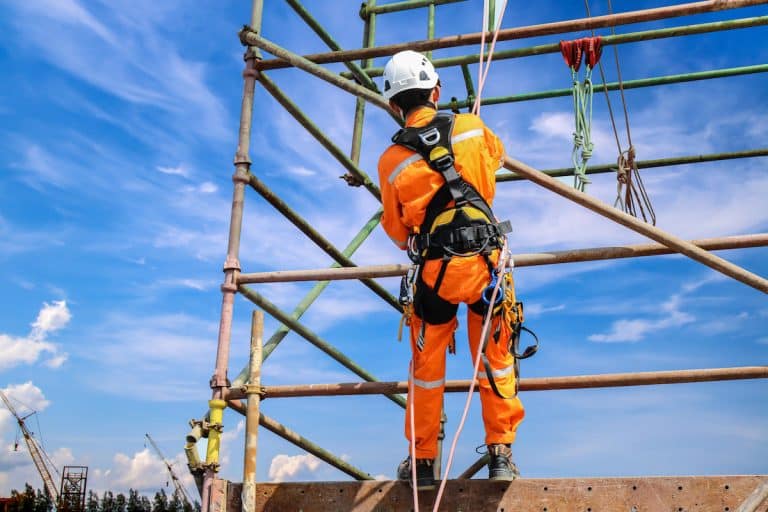
25 Most Dangerous Jobs In America
Posted on February 6, 2019 in Firm News
While most Americans go to work hoping to make it home by dinner, some workers in dangerous industries are just hoping to make it home at all. A total of 5,147 workers sustained fatal injuries on the job in 2017, according to the Bureau of Labor Statistics Census of Fatal Occupational Injuries, and some occupations have proven to be far more deadly than others.
WHAT ARE THE 25 MOST DANGEROUS JOBS IN AMERICA?
1. Fishers and related fishing workers: 100.00 per 100,000
2. Logging workers: 87.3 per 100,000
3. Aircraft pilots and flight engineers: 51.3 per 100,000
4. Roofers: 45.2 per 100,000
5. Refuse and recyclable material collectors: 34.9 per 100,000
6. Structural iron and steel workers: 33.3 per 100,000
7. Driver/sales workers and truck drivers: 26.9 per 100,000
8. Farmers, ranchers, and other agricultural managers: 24.0 per 100,000
9. First-line supervisors of landscaping, lawn service, and groundskeeping workers: 21.0 per 100,000
10. Electrical power-line installers and repairs: 18.6 per 100,000
11. Miscellaneous agricultural workers: 17.7 per 100,000
12. First-line supervisors of construction trades and extraction workers: 17.4 per 100,000
13. Construction trades: 17.3 per 100,000
14. Maintenance and repair workers, general: 16.6 per 100,000
15. Grounds maintenance workers: 15.9 per 100,000
16. Construction laborers: 14.3 per 100,000
17. First-line supervisors of mechanics, installers, and repairers: 13.1 per 100,000
18. Police and sheriff’s patrol officers: 12.9 per 100,000
19. Operating engineers and other construction equipment operators: 11.8 per 100,000
20. Mining machine operators: 11.7 per 100,000
21. Taxi drivers and chauffeurs: 10.5 per 100,000
22. Athletes, coaches, umpires and related workers: 9.5 per 100,000
23. Painters, construction and maintenance: 8.9 per 100,000
24. Firefighters: 8.9 per 100,000
25. Electricians: 8.4 per 100,000
The jobs on this list have more than double the fatality rates of the 72 other occupations evaluated, some even 20 times higher. Each occupation was rated by the number fatal injuries in 2017 per 100,000 full-time workers or an employee who works at least 2,000 hours a year.
Common Types of Fatal Work Accidents
• Falls, slips, and trips
• Transportation incidents
• Contact with objects and equipment
• Violence and other injuries by persons or animals
• Exposure to harmful substances or environments
• Harmful contact with objects and equipment
WORKERS WITH THE HIGHEST RISK
• New employees
• Contractors
• Workers who take overtime
• Temporary employees
• Risky employees
Within each industry, certain populations are more at risk for occupational injuries than other workers on the job. EHS Today reports these workers within dangerous industries are more likely than others to experience fatal and non-fatal injuries.
In addition, these types of workers are at a higher risk of injuries due to stress, fatigue, inadequate safety training, and unfamiliarity with the workplace environment and daily hazards.
FACTORS THAT MAKE DANGEROUS JOBS FATAL
Driving long distances without adequate rest; operating hazardous machinery; and performing tasks at dangerous heights are several reasons why certain occupations are proving to be more fatal than their counterparts.
The National Safety Council reports that jobs with the highest rates of fatal accidents have one of the abovementioned factors in common. Other factors that have been found to increase the number of unnecessary fatalities on the job, highlighted by EHS Today, include poor leadership allowing breakdowns in safety, high employee turnover rates, and a larger employee to employer ratio on the job.
HOW TO PREVENT WORKPLACE FATALTIES
• Regular training
• Observing best practices at work
• Get all employees involved in employing safety measures
• Keep track of close calls
• Conduct risk assessments
Most fatal injuries, even in the most dangerous of occupations, can still be prevented using the proper safety measures. The EHS Today article suggests safety managers and employers can start by focusing on these areas of management to help determine the best methods for keeping employees safe at work.
Employees cannot learn how to stay safe on their own. Starting by training every new employee before they begin, and training current employee on an ongoing safety schedule, can help keep safety measures current and address any new issues that come up.
Employers should set aside time to monitor employees’ safety practices on the job and take notice of actions or areas they need more training in.
Engaging employees in increasing safety practices and reducing accidents can help create more of a team effort to create a safer work environment.
Evaluating non-fatal injuries and other accidents on the job can help prevent even more injuries on the job that could result in fatalities.
Develop a life-threatening risk program to help prevent fatal injuries in any known risky areas or tasks.
ALL NY WORKERS DESERVE SAFE JOBS
Pazer, Epstein, Jaffe, & Fein has been fighting back for New York City workers for over 50 years. If you or a loved one has sustained a serious work-related injury, our team is here to help. We can review your case and rights to a safe work environment. Contact us using our convenient online form or feel free to phone us in New York at 212-227-1212, or in Huntington/Long Island at 631-864-2429.

